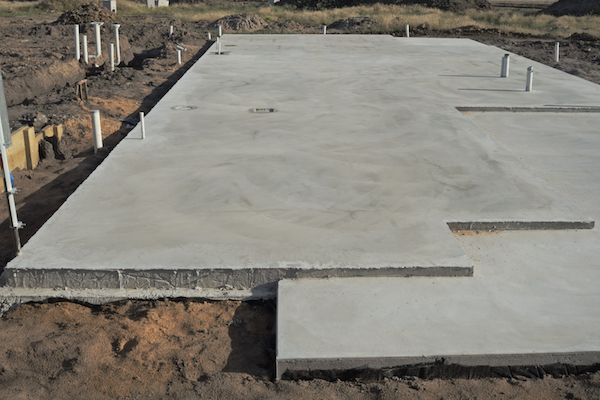The concrete slab in your place of business is something you probably don’t think about very often. However, it’s actually one of the single most important components of your entire structure. It’s responsible for the overall stability of the building, and any major defects can cause serious problems.
In the fast-paced, high-tech world in which we live, many industrial facilities use automated guided vehicles, highly sophisticated forklifts, and other advanced material-handling equipment. That is one of the reasons concrete slabs are such an integral part of the building’s construction. Concrete slabs must withstand tough conditions such as impact and abrasion from heavy, moving traffic and static loads, and ideally, the floor must be flat, in proper alignment and in good shape. Unfortunately, because of initial construction techniques, or uses and loads that differ from the original design, slab-on-grade floors can develop problems that often result in costly delays or downtime. However, with a basic understanding of common problems, as well as tips on troubleshooting, your maintenance manager can maximize productivity and reduce downtime.
A concrete floor should have firm contact with the supporting subgrade so that moving and static loads can be distributed through the slab. This intimate contact can fail, however, when a void forms between the slab and subgrade exerting stress in the concrete. The void becomes apparent when the floor cracks and settles at a lower level than the adjacent areas or the slab rocks when wheeled loads roll across a joint. Curling at joints, joint failure and heaving are other indications that the desired contact between the slab and subgrade has been compromised.
“It is to the credit of concrete that so few complaints are received on the vast amount of construction put in place,” the Portland Cement Association writes. However, issues do occur in certain situations and should be dealt with as soon as they’re identified.
A common problem with concrete floor slabs in an industrial environment is curling. On some occasions, this is caused by geotechnical conditions. Though, most typically, curling occurs when the conditions under which the concrete cures are different in the top and bottom portions of the freshly poured slab. Often times, the surface dries and cools more quickly than the moister, warmer, bottom of the pour. This causes the slab to shrink and shorten at the top.
With curling, the slab’s corners and edges begin to rise. As the edges curl upward, the load on the subgrade at the center of the slab increases, and the slab begins to sink into the subgrade. Your slab cannot withstand the resulting high tensile stresses. That is when cracking begins along the perimeter of your floor. This is often observed in cast-in-place concrete floor slabs and can most often be traced back to careless installation, or faulty field practices during the original construction of your building.
Another potential issue with a concrete slab is the area around the joints can also be vulnerable to damage. The floor can begin to deflect at the joints if there is a void between the subgrade and the slab. This phenomenon begins to happen when any type of heavy equipment – forklifts, for example – are carrying heavy loads and they approach the slab joint. Because of the diminished load-bearing capacity, the load deflects the slab downward into the void, most typically in undetected measurements, which exposes the edge of the adjacent joint shoulder to the full impact of the load. Even though concrete slabs are strong and durable, it’s no match for this type of repetitive tensile stress. If the problem isn’t remedied, the condition will worsen, become more dangerous for vehicular traffic, and can potentially increase the cost of repairs. For these reasons, it is crucial to engage with a professional Toledo paving company to assess and repair any issues with your concrete slabs.
We also work closely with a Toledo drain cleaning company to ensure that any potential drainage issues that could impact the stability of your concrete slab are addressed and resolved. Proper drainage maintenance and cleaning are essential for preventing damage to your concrete slab and maintaining the integrity of your industrial facility. Our collaboration with a drain cleaning company allows us to proactively identify and resolve any drainage issues that could affect the stability of your concrete slab. Additionally, partnering with a sewer repair company Toledo helps address any underlying sewer issues that could compromise your facility. This proactive approach helps to ensure the safety and durability of your facility’s flooring.
Should you notice any type of damage to your floor, we recommend having it inspected and make any repairs in a timely fashion. If you are beginning a new build, our experts are available to come out and give you an estimate to have your concrete slab professionally poured. We will work with your team leader to understand the amount of load you’ll be putting to your flooring and ensure that it meets the specifications necessary for your industry.

